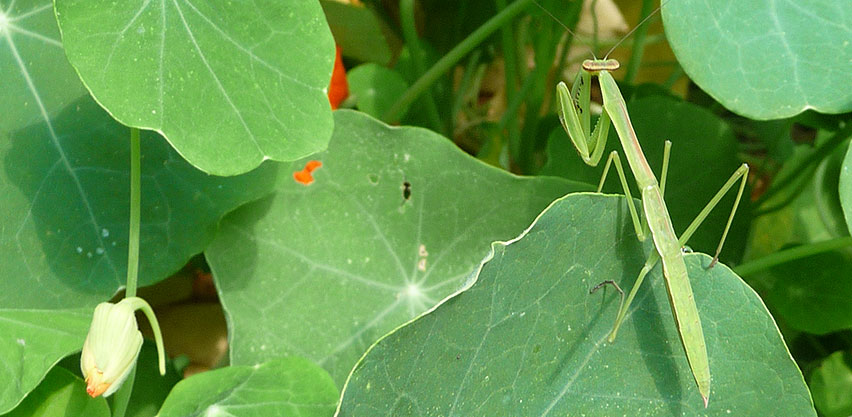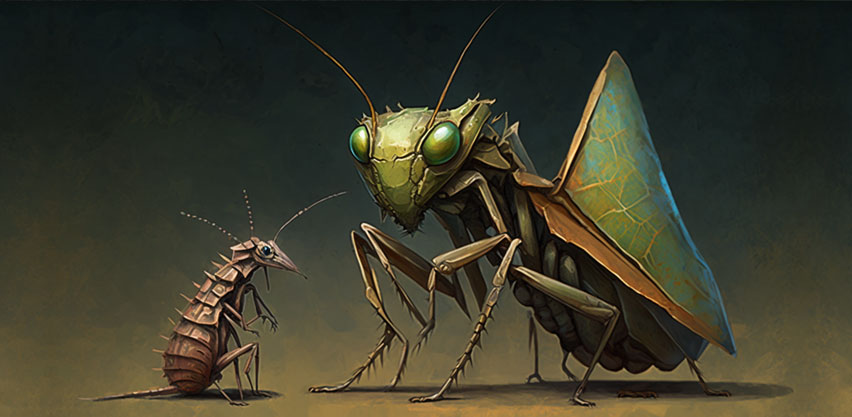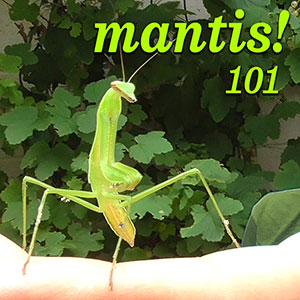Are Chinese Praying Mantises Bad, Invasive or Even Dangerous???
The amount of misinformation about Chinese mantises is quite alarming. For decades scientists have debated whether Chinese mantises might have a destructive impact on North American ecosystems. Some conservationists employ sensationalism and graphic language to invoke an emotionally charged response from their audience. Facts are frequently twisted or omitted entirely, with the goal of biasing people against Chinese mantises. What's the truth about the Chinese praying mantis?
- The Truth About Chinese Praying Mantises:
- When Were Chinese Praying Mantises Introduced?
- Are Chinese Praying Mantises Endangered?
- Is It Illegal to Kill a Praying Mantis?
- Are Chinese Praying Mantises Dangerous?
- Are Chinese Praying Mantises Invasive?
- Are Chinese Praying Mantises Bad?
Video: Praying Mantises in the Garden
Why Some People Don't Like Them
Praying mantises have long been popular with gardeners, but recently some people have portrayed them as "bad."
When Were Chinese Praying Mantises Introduced?
The Chinese praying mantis (Tenodera sinensis) is a widespread and adaptable species that can be found in many different habitats throughout its native range in Asia, including forests, grasslands, and agricultural areas. It was first introduced to the United States in the late 19th century. In 1896 the Chinese praying mantis was accidentally introduced by a nurseryman at Mt. Airy, near Philadelphia, PA. It has been used in the US as a potential biological control agent to help manage agricultural pests, such as gypsy moths and Japanese beetles. Having lived in the US for more than 127 years, the Chinese mantis is a well established and naturalized insect species. The mantis quickly became popular among gardeners due to its striking appearance and perceived usefulness as a natural pest control agent. Since its introduction, the Chinese mantis has become one of the most commonly encountered mantis species in the country.

While the Chinese mantis is quite common in the US, the other native species are still around too. None are endangered.
Are Chinese Praying Mantises Endangered?
No, Chinese mantises (Tenodera sinensis) are not currently considered endangered in any states within the US. There are no mantis species living in America that have any endangered status. Even still, mantis populations may be threatened in some areas due to habitat loss and pesticide use.
Like many insects, Chinese mantises may be negatively impacted by habitat destruction and fragmentation, which can limit their ability to find food and mates. Additionally, pesticides and other chemical pollutants can be toxic to mantises and other insects, which can further threaten their populations. Overall, while Chinese mantises are not currently considered endangered, their populations may be at risk in some areas, and efforts to protect their habitats and reduce the use of harmful chemicals can help ensure their continued survival.
Is It Illegal to Kill a Praying Mantis?
The legality of killing a praying mantis depends on the specific laws and regulations of the country or region in which you live. In the United States there are no mantis species that have endangered status. No mantises have any special legal protection in America, thus it's not illegal to kill them. This is a common myth which is still repeated to this day.
Killing a praying mantis may not be specifically illegal, but in many places it was once generally discouraged due to their ecological importance in controlling insect populations. In recent years though, many researchers have questioned the usefulness of mantises for garden pest control. Their non-specific predatory nature means that they may kill other beneficial predators and pollinators. Additionally, many conservationists have worked to turn public opinion against non-native species, especially the Chinese mantis. As a result, some gardeners and conservationists actually go out of their way to kill Chinese mantises.
It's always a good idea to research and understand the laws and regulations in your area regarding the treatment of animals, including praying mantises. If you have a praying mantis in or around your home and are concerned about its presence, rest assured, it poses no threat to humans.

When handled gently, praying mantises are docile and pose no threat to humans.
Are Chinese Praying Mantises Dangerous?
Chinese mantises are not generally considered dangerous to humans. While they are equipped with sharp spines on their forelegs and can deliver a painful bite if threatened or provoked, their bites are not venomous. Mantises are not known to cause any serious harm to humans. In fact, Chinese mantises are often kept as pets or used in biological pest control because they are known to prey on a variety of insects and can be effective at controlling pest populations.
That being said, it's still important to handle Chinese mantises with care and respect, as with any living creature. They should be handled gently and not provoked or mistreated, as this can cause them to become defensive and potentially aggressive.

Praying mantises eat many garden pests such as this stink bug.
Are Chinese Praying Mantises Invasive?
At times, Chinese mantises (Tenodera sinensis) are referred to as being "invasive" in some parts of the United States. It's not uncommon to read conservation blogs which refer to them as such, using the term invasive as a pejorative. Even some biologists and entomologists have characterized the Chinese mantis as "invasive." However these researchers "follow the convention of considering any taxon as invasive that not only becomes established, but also spreads readily in its new range." The book Fifty Years of Invasion Ecology The Legacy of Charles Elton defines an "invasive species" as "Alien species that sustain self-replacing populations over several life cycles, produce reproductive offspring, often in very large numbers at considerable distances from the parent and/or site of introduction, and have the potential to spread over long distances."
Although it points out that "not all naturalized species become invasive," it admits that this definition "excludes any connotation of impact, and is based exclusively on ecological and biogeographical criteria ... the definition supported by the World Conservation Union (IUCN), the Convention on Biological Diversity and the World Trade Organization explicitly assumes that invasive species cause impacts to the economy, environment or health." You'll find a similar definition of invasive species when looking at the US legal definition. According to the National Invasive Species Information Center, "As per Executive Order 13112 (Section 1. Definitions) an 'invasive species' is a species that is: 1) non-native (or alien) to the ecosystem under consideration and, 2) whose introduction causes or is likely to cause economic or environmental harm or harm to human health." Using this definition for an invasive species, Chinese praying mantises are not classified as invasive by the United States Department of Agriculture (USDA).
These latter definitions are more appropriate for determining policies and assessing whether a species is having a destructive impact. In the US, the Chinese mantis is certainly a non-native, naturalized species. Although some people try to assert that Chinese mantises can have negative impacts on ecosystems where they've been introduced, this is still strongly debated. They can impact native insect populations including beneficial ones. They also have a high reproductive rate and adaptability, allowing them to outcompete native species for resources. But no state or federal regulating bodies have classified them as "invasive."

Are praying mantises the evil alien threat that some bloggers paint them to be?
Are Chinese Praying Mantises Bad?
Chinese mantises, like all mantises, are predatory insects. From the perspective of their prey, mantises might be considered "bad." But from a human perspective, Chinese mantises are generally considered beneficial. They can help control populations of pest insects in gardens and agricultural fields.
As mentioned earlier, Chinese mantises pose no serious danger to humans. In fact, they are popular as pets. Mantises are commonly used in schools and other educational settings to teach children about insects and ecology. They're relatively easy to care for and can be fascinating to observe.
Although the Chinese mantis is non-native to the US, it has not been classified as invasive. It has been living as a naturalized insect for well over a century. It does not damage agricultural or ornamental crops, nor has it been shown to cause any economic harm.
Despite all of this, some conservationists try to portray Chinese mantises as highly invasive pests. They vilify mantises in an effort to portray them as being "bad." It's worth noting that while mantises are generally beneficial, they can occasionally prey on beneficial insects as well, such as bees or butterflies. However, this applies to both native and non-native mantises. Chinese mantises are not the only mantis species which has been known to feed on pollinators or other predatory insects.




